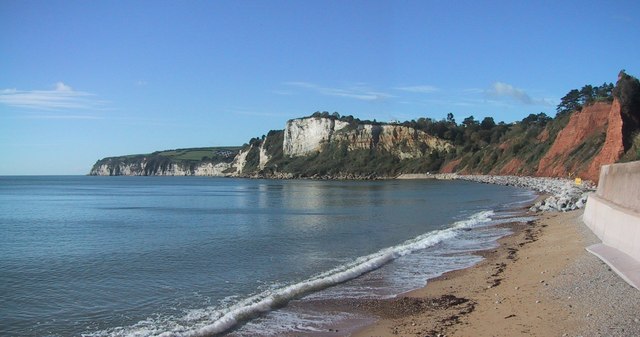
Erosion prevention will cost nearly £1 million
Nearly a million pounds is to be spent to try to slow the cliffs at Seaton in East Devon which have been falling into the sea.
Like much of the western part of the Jurassic Coast, the area is subject to occasional cliff-falls, and cliff erosion seems to have been speeding p.
Now East Devon District Council has solved a funding gap to allow a £900,000 scheme to get cracking, with construction of the main elememt probably starting in the autumn of 2023.
The Seaton Hole Beach Management Plan has been rubber stamped by the Environment Agency and should improve protection of 41 homes above the cliffs, by upgrading and extending the existing rock structures on the beach.
This should reduce the rate of erosion to the base of the cliff, as the toe will be better protected from storms thanks to the additional rock placed on the existing rock, which will offer more protection to the toe of the cliffs from storms.
Due to the worsening condition of the concrete covered rock section to the west of the beach, works are due to start this year, ahead of the main scheme. Other works require more detailed planning and consultation.
The scheme had a funding gap of just over £400k in 2019, but changes in central government funding rules and other local funding has been found.
The next step is to begin detailed design and further consultation to allow the project to go out to tender.
Councillor Jack Rowland, who represents the Seaton ward and is EDDC’s portfolio holder for finance, said: “It’s great news that the funding is now in place to enable works to proceed to provide more protection for Seaton beach at the western end beyond West Walk that is even more essential in the light of climate change and the associated risks to our coastline.”
Cllr Geoff Jung, EDDC’s portfolio holder coast, country and environment, added: “Our officers and staff are working on various schemes with agencies and other authorities to protect our vulnerable areas of coast line, which due to climate change estimations will result in sea-level rise and increased storm events effecting our coast and low laying areas.
“This scheme is just one of many which will provide the required protection for these predicted changes.
“Therefore, it's fantastic news we are able to move forward in the knowledge we have the required funding in place."
 Two men missing after entering sea
Two men missing after entering sea
 Students take over Radio Exe
Students take over Radio Exe
 Work to start on major Tavistock Road improvements
Work to start on major Tavistock Road improvements
 Last night of the Christmas Proms - REVIEW
Last night of the Christmas Proms - REVIEW
 Christmas snow possible on Dartmoor
Christmas snow possible on Dartmoor
